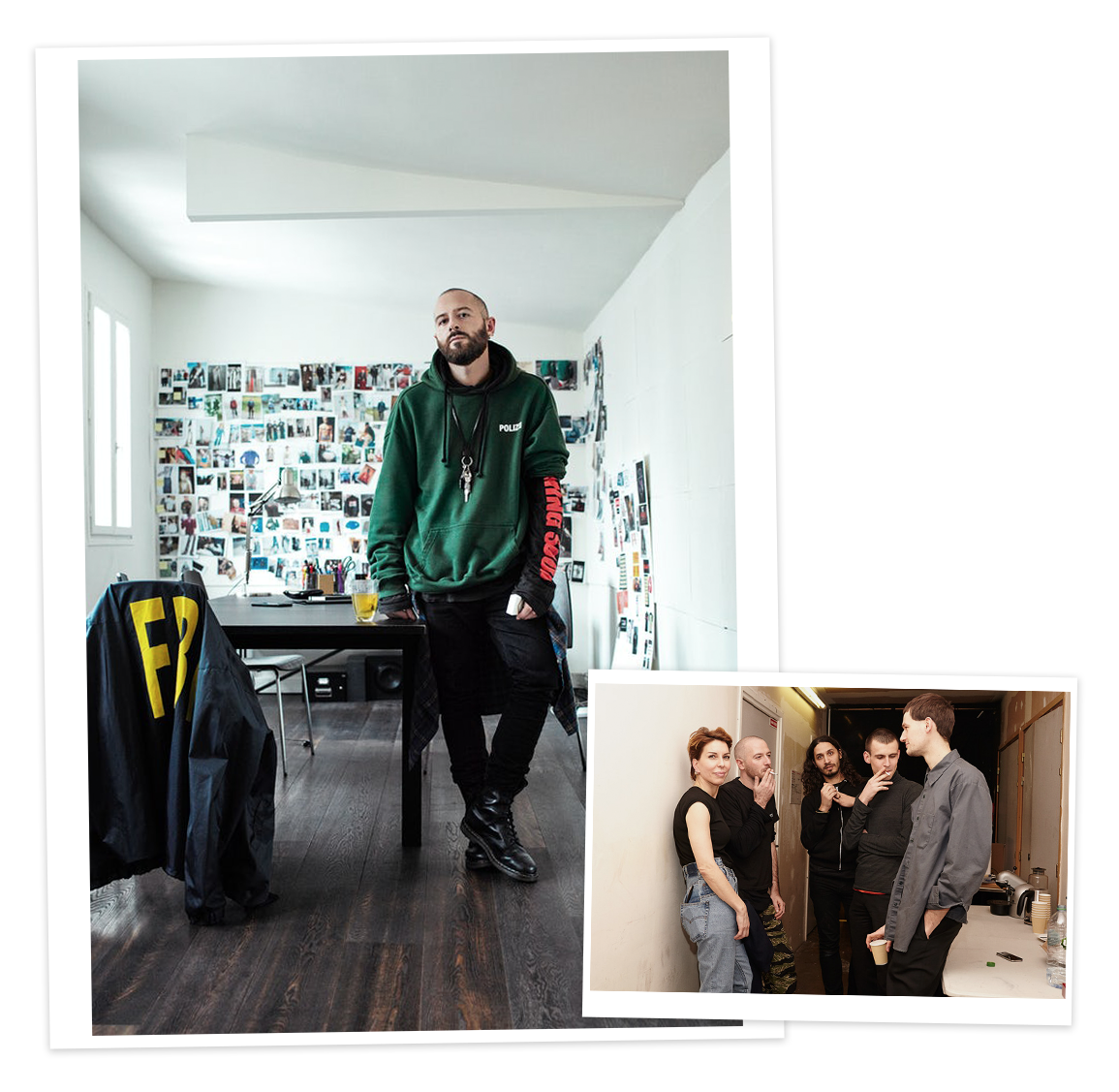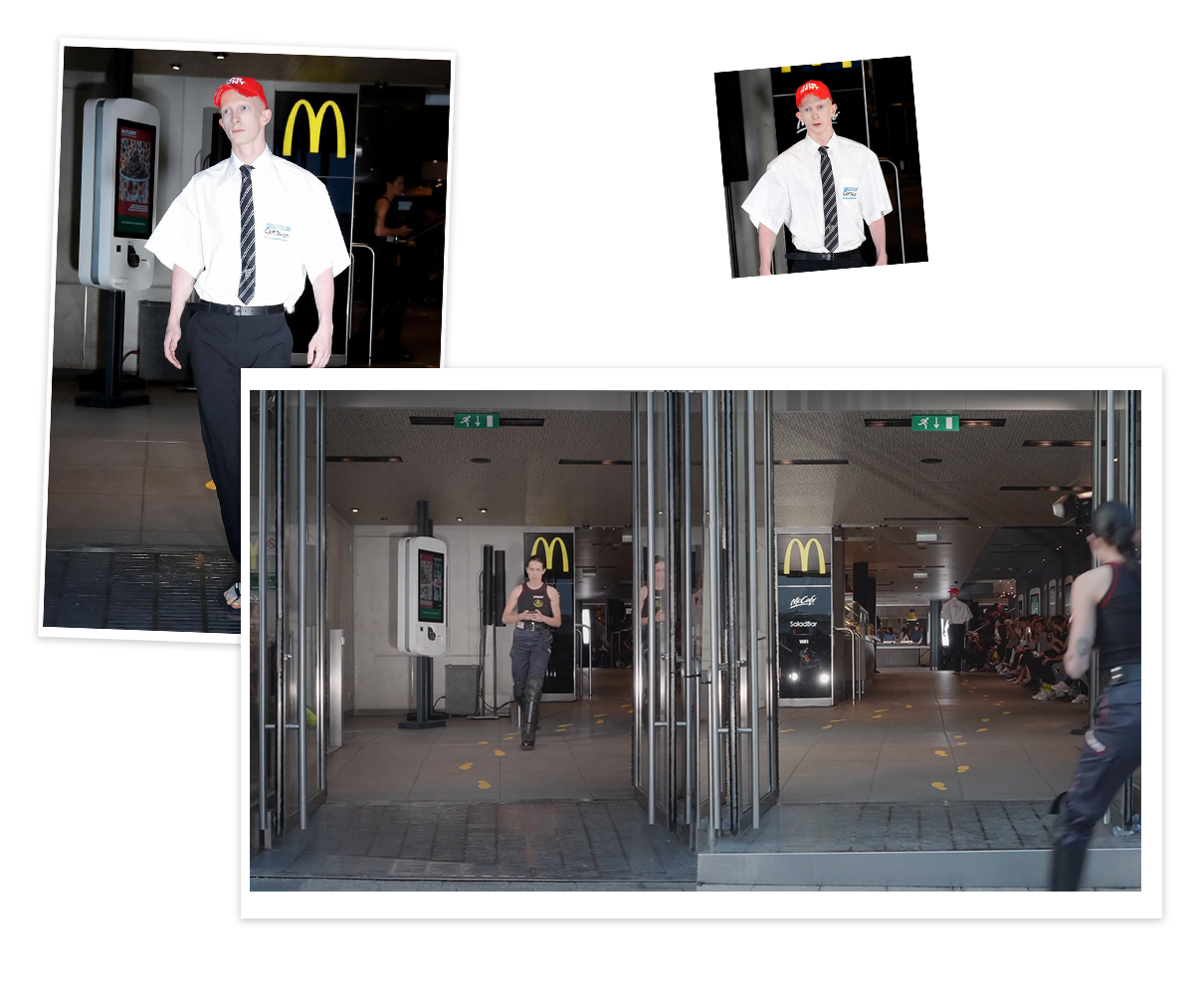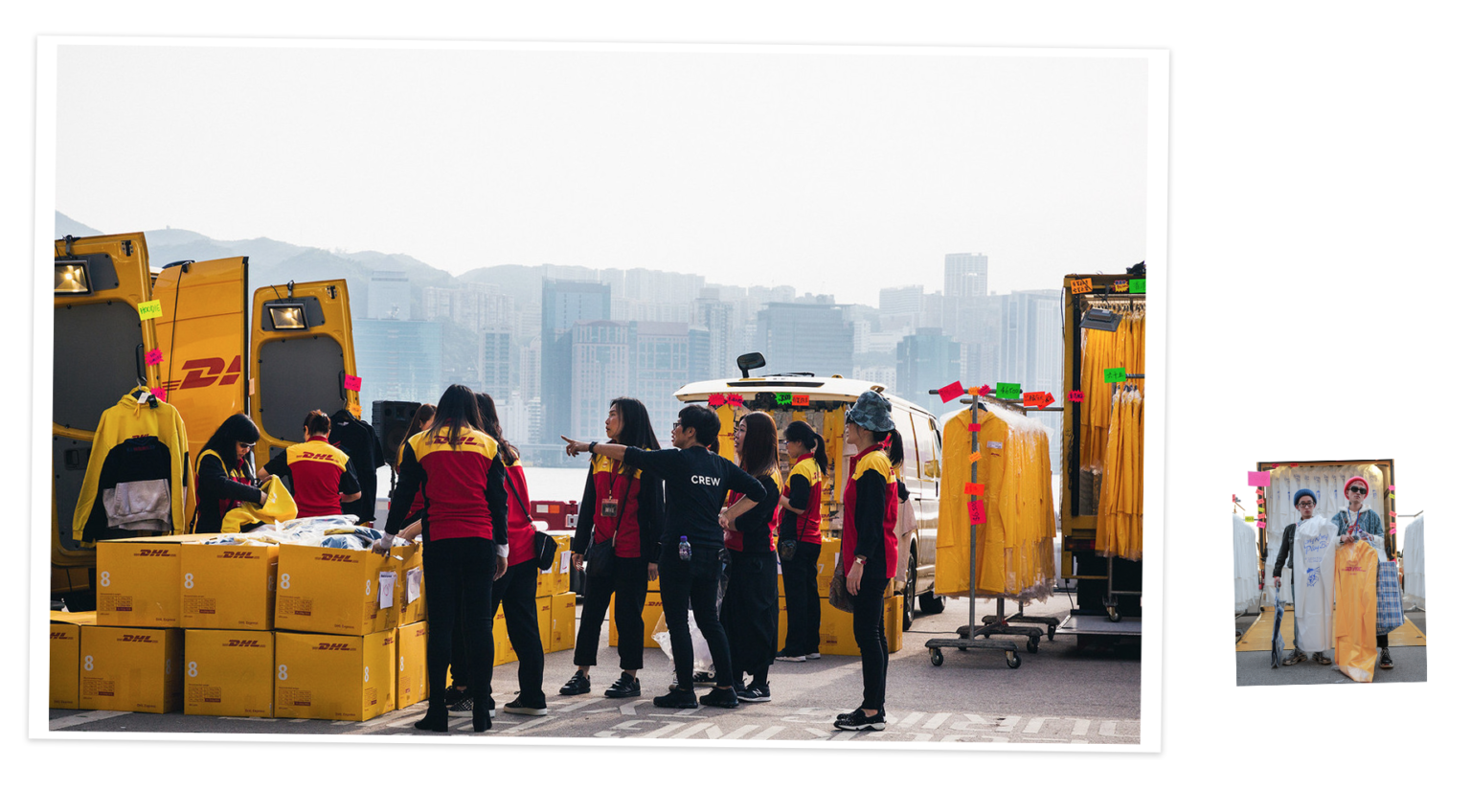Divisive DHL collaborations, surrealist McDonalds runway shows – Vetements is a case study in launching a luxury label in the age of the meme-lord. However, as quickly as they blew up, Vetements fell off the map. For the latest instalment of 'Missing in Action', we dive deep on the rise and fall of the meta fashion house once on everyone’s lips.

Founded by Demna Gvasalia in 2014, Vetements was established with a clear ethos: “to bring fashion’s focus back to clothes.” (Ironic given that drumming up controversy with their shows and polarising post-ironic product drove focus onto everything but the clothes, but we move.) Having studied at the Royal Academy of Fine Arts in Antwerp, Georgian-born Demna’s fashion pedigree was well established long before Vetements’ inception. Graduating in 2006, he quickly found footing in the luxury arena, cutting his teeth at Maison Margiela from 2009 onwards as womenswear designer. An alum of the same school attended by the esteemed Martin Margiela himself (as well as the famed ‘Antwerp Six’ group of designers including, among others, Dries Van Noten), Demna’s work often cited the same sources of inspiration and points of reference. Adding yet another plaudit to his CV, Demna also led womenswear design at Louis Vuitton from 2012 to 2014, before leaving to form Vetements.
Launched as a faceless design collective, behind the scenes Vetements’ elusive band of collaborateurs boasted a cross-section of Demna’s friends and figures from throughout his career, all with impressive creative backgrounds ranging from Balenciaga and Céline to Louis Vuitton and Maison Margiela. Presenting an inaugural collection in the fall of 2014, Demna’s notoriety meant Vetements quickly captured the attention of buyers who might have been otherwise reluctant to invest in a relatively unknown brand. A year later, Vetements made the first of their many disruptive statements by hosting their FW15 show in Paris’ iconic Le Dépôt sex club, cementing their place in the fashion landscape as the industry’s latest l’Enfant Terrible. That same year, the brand was a finalist in the coveted LVMH prize, drawing a swathe of attention for their Metal Logo hoodie which quickly sold out after being co-signed by a cast of influential early adopters including Rihanna and Kanye West. Firmly in the spotlight, flex-ready tastemakers were desperate to see what Vetements would do next.

In 2016, Vetements crossed over into popular culture thanks to their SS16 collection which featured a slew of outerwear, shirts, hoodies and dresses – all crafted in the label’s signature language of oversized cuts, elongated sleeves, distorted silhouettes and DIY construction. The design, however, sat secondary to the collective’s nuanced reimagining of pop-culture moments and normcore brands such as Champion and DHL. Perhaps one of the most alienating fashion moments of the past decade — the £185 DHL t-shirt — stirred up comment-section warriors like only true agitators know how. Defining a hyper-meta and anti-fashion tone of voice, Vetements established themselves as fashion’s most meme-worthy label (despite Gucci’s try-hard attempts to follow suit), polarising opinion and driving discourse across the internet. This controversy — combined with the announcement of Demna as CEO of the previously faceless entity — drove hype to an all-time high.
Continuing to elicit conversation with their ironic approach, Vetements presented subsequent shows in Chinese restaurants and, infamously, inside a Parisian McDonald’s. The product, meanwhile, focussed on controversial graphic prints splashed across outsized garments, defining an IDGAF dress code for flex-heads tired of the status quo. Taking inspiration from the most bizarre to the most mundane, their mood board ran the gamut from office workers to 80s underground rock musicians, the Soviet working class to floral kitchen rags. Nothing was out of bounds for Vetements. Disruptive to the core, they were one of the first labels to break away from the antiquated fashion calendar, announcing in early 2017 that they would instead be showcasing collections whenever they felt like it. Continuing to present collections in their statement, devil-may-care mode, the following SS18 show was titled “NO SHOW” and featured photographs of street-cast Zurich locals in place of models.

Season after season, Vetements maintained its status as the black sheep of the fashion industry. Credited with the brand’s commercial success, Demna’s brother – Guram Gvasalia – championed a unique business model that opted for imposing maximum order quantities on wholesale buyers, hoping to ensure exclusivity of products and build scarcity into the brand’s strategy to drive yet more hype. All of this controversy and creative strategy blended together to create the Vetements paradox: mimicking the price-tag of luxury labels while capitalising on the limited availability of streetwear drops, knowing full-well that, despite the exorbitant pricing, their audience would crave their self-aware satirical symbols of consumerism anyway. In fact, many chased the Vetements ideology because the products were intentionally overpriced, not despite it.
Demna’s controversial success at Vetements soon caught the attention of Balenciaga, who installed him as creative director in 2015. While this proved to be a huge success for Balenciaga, many have accredited the downfall of Vetements to Demna’s time being dedicated to his new creative directorship rather than pushing the agenda of his own label. Unable to maintain the hype — and with Vetements becoming more and more of an afterthought for Demna — the brand began recycling old ideas, like a joke gone on a little too long. This has never been more apparent than with the recent launch of a new brand named VTMNTS. Who is this new brand for? How is it different from mainline Vetements? How do you even say VTMNTS? As the label began to fall out of the global fashion conversation, brand stans no longer felt comfortable paying the hefty price tag for the quality offered, with many simply flocking to Balenciaga instead.

Despite the lofty intentions of Guram’s exclusivity-based strategy, the brand failed to adequately police its wholesale operation and was soon stocked in countless retailers worldwide. Easily available behind too many doors, shrewd customers began noting the sheer amount of Vetements landing in sale: the kiss of death for any product boasting a luxury price tag. But it was Demna’s exit in late 2019 that was the final nail in the coffin. The designer announced his departure to “pursue new artistic ventures,” stating that his brother Guram would succeed him in leading creative at the label. “I feel that I have accomplished my mission as a conceptualist and design innovator at this exceptional brand,” Demna said. “Vetements has matured into a company that can evolve its creative heritage into a new chapter on its own.
Since then, the brand has been relatively quiet. While Demna continues his work at Balenciaga, the Zurich-based Vetements has fallen flat. Earlier this year, Guram Gvasalia released a 165-page lookbook for Vetements Fall/Winter 2021 collection, seemingly oblivious to the lack of interest required to warrant a collection that size and, once again, failing to adequately read-the-room as the global conversation on sustainability reaches an all time high.

Vetements will forever be iconic. Under Demna’s leadership, the brand was one of the first to challenge the modern fashion industry, breaking away from tradition and creating their own narrative fueled by a droll interpretation of pop culture, controversial tees and unconventional silhouettes. At the height of their notoriety, Vetements popularised a litany of subversive trends and elegantly weaponised consumerist culture against itself with a post-modern deluge of ironic try-hard fashion products for the like/comment/subscribe generation. But all things must pass, right?
Despite Vetements falling into obsolescence, Kanye recently tapped Demna as creative director of his infamous DONDA listening parties, and soon after was spotted in a spread of back-season Vetements pieces. While this seems like a fitting endorsement from an artist who has similarly fallen from his plinth in recent years, could a new Kanye co-sign be the cultural clout required to kick-start a comeback? Or is the ‘diet Balenciaga’ designation too much to overcome? Watch this space…
Written by
Joe Sparks

What Went Down: eBay in Session with Louis Holsgrove x The Basement
- Community
- Interview
- 15 minute read

PUMA’s PFW Pop-Up Proved They’re Not Playing Games
- Fashion
- Feature
- 8 minute read




